Sidewall belt conveyor is a special belt conveyor. Its main feature is that it can be transported vertically or at a large inclined angle. So what are the main advantages of it compared with the trough belt machine? The following will give you a detailed introduction to the differences and advantages of sidewall belt conveyor compared with ordinary belt machines:
The wave-shaped belt conveyor has many advantages, such as smooth operation, safe and reliable use, less equipment parts and easy maintenance, low noise, flexible layout and so on. sidewall belt conveyor can be used in the work site temperature of 15 to 40 degrees below zero, conveying a pile density of 0.15 to 319t/m3 of a variety of loose materials, large Angle sidewall belt conveyor uses corrugated conveyor instead of ordinary conveyor belt, greatly improving efficiency. It is highly praised and widely used in all walks of life.
The structural form and function of the sidewall belt conveyor's driving device, transmission drum, reversing drum, tensioning device, various frames, guide chutes, discharge chutes, electrical and safety protection devices and other components are not very different from that of ordinary belt conveyors. The following are the main parts of sidewall belt conveyor that are different from traditional belt conveyor:
.jpg)
There is a great difference in the structure of the conveyor belt used. The sidewall conveyor belt is formed by adding wavy guards on both sides of the base belt, which is both a traction part and a bearing material component. The baseband is equivalent to an ordinary conveyor belt, but has greater lateral stiffness than an ordinary conveyor belt. The two sides of the guard are wavy, when the conveyor belt around the drum or concave, convex arc, the upper part of the wavy guard can be freely extended or compressed. The middle of the belt body between the two sides of the guard can be added according to the need of a certain spacing of the transverse partition to achieve a large Angle of transmission. The transverse diaphragms of the sidewall conveyor belt are T type, C type, TC type, TS type and TCS type.
When the conveyor Angle is Bs18, the horizontal partition is generally not used. When 18°<60, C-type transverse partition is generally selected; When 60°≤B≤90, a strand is selected as a TC or TCS transverse diaphragm. When the transverse partition height is more than 280, TS or TCS type should be selected. In addition to the basic parameters such as bandwidth, belt speed and inclination Angle, the maximum throughput of
sidewall belt conveyor is also determined by the type of sidewall conveyor belt and the type, height and spacing of transverse partition. The belt wheel and the belt roller are used on the side of the belt guard and the transverse partition of the concave and convex arc conveyor belt to change the running direction of the conveyor belt. The pressure belt wheel is a step wheel symmetrically pressed on the empty edge and the wavy retaining edge on both sides of the conveyor belt, which is used for the conveyor belt tension is small, that is, the lifting height is small. When the lifting height is large, that is, the conveyor belt tension is large, the belt roller set should be used to increase the curvature radius of the concave and convex arc and disperse the tension of the conveyor belt. Belt conveyor roller supporting rod is divided into upper roller and lower roller. The upper supporting rod is similar to the flat upper supporting roller of a common belt conveyor, which is used to support the bearing branch of the conveyor belt. The convex arc supporting roller is used to support the side of the conveyor belt without wavy retaining edge to change the running direction, and the buffer supporting roller is used to receive material. The lower roller is used to transport the side with wavy rib to support the return branch of the conveyor belt, which is divided into single type, compound type and belt support wheel. The single lower roller is similar to the flat lower roller of the ordinary belt conveyor, which is used for the conveyor with bandwidth ≤80O; The compound lower roller and belt support wheel are composed of a single lower roller and a belt support roller or belt support wheel supported on the empty edge of both sides of the conveyor belt, which is used for the conveyor with a bandwidth of >800m.
The anti-deflection roller is installed on both sides of the conveyor to prevent the conveyor belt from running off, including two types of vertical roller and guide wheel. The guide wheel is made of elastic rubber and is only used in the vertical conveyor section. The sweeping device includes four kinds of vibration cleaner, empty section cleaner, reversing pressure wheel cleaner and belt empty side cleaner, and the belt conveyor is mainly used. The vibration cleaner is installed at the discharge roller to remove the remaining materials on the bearing surface of the conveyor belt. The empty section cleaner is installed at the tail to remove the materials on the non-bearing surface of the conveyor belt. The reversing pressure wheel cleaner is used to clean the hub surface of the reversing pressure wheel. The belt empty edge cleaner is used to clean the empty edge on both sides of the bearing surface of the conveyor belt.
The above is the difference and main advantages of
sidewall belt conveyor and ordinary trough belt conveyor. We are a professional manufacturer of bulk material conveyor. We have rich design experience and advanced processing equipment and 5000+ customers' choice.


.jpg)
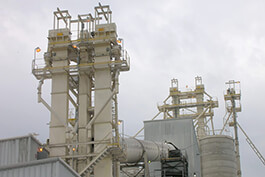
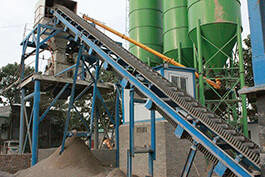
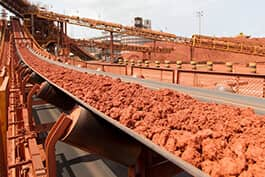
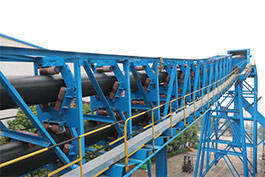
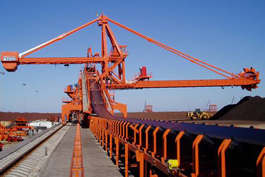
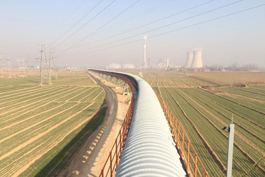
.jpg)
.jpg)


